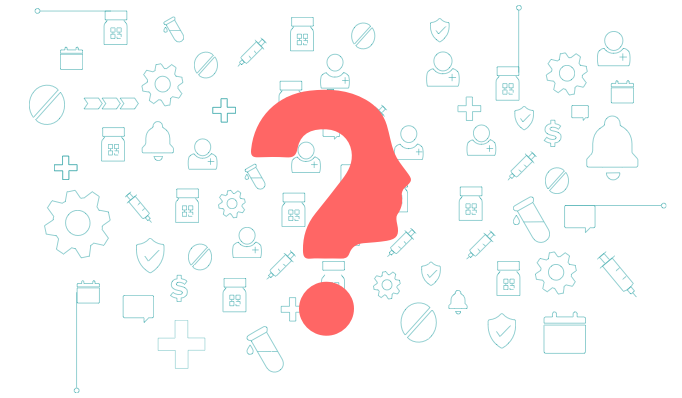Consumerism is the new buzzword in healthcare. Health system, payer, and pharma executives all recognize that the industry must evolve and become more consumer-centric in the way it deals with patients.
There are a number of forces at play that make the concept of consumerism more than just a one-time, clever handle for a conference keynote speech. First of all, the government is creating risk-sharing reimbursement structures in an effort to tamp down costs as millions of baby boomers age into Medicare. Commercial payers are following suit, creating value-based bundles that emphasize outcomes over line-item fee for service contracts.
At the same time, tech-savvy, consumer-focused companies see a huge opportunity to grab a slice of the multi-trillion dollar healthcare pie. Amazon, Apple, Uber, Walmart, and CVS are each making huge bets in their respective markets to deliver what the healthcare establishment has failed to do — provide a superior consumer experience at a competitive price to win market share.
Healthcare is a different animal when compared to most consumer categories. There’s extensive regulation, heavy government involvement, complexity, and massive capital costs that pose significant barriers. It won’t be easy. But any disruption faces hurdles.
In 1997, nobody believed Amazon would be much more than a convenient way to buy books. Yet, fast forward 20 years: they’ve turned the entire retail industry upside down and they’re nowhere close to being done. Amazon Web Services (AWS) was born out of their desire to own their own data centers and now dominates the $80 billion cloud infrastructure hosting industry. They’ve put the logistics industry on notice by creating their own global network of ships, planes, trucks, and distribution centers that eventually will give any company (not just Amazon orders) a “Prime” quality shipping option that has FedEx absolutely terrified.
In other words, never underestimate companies with disruptor DNA.
If we take the industry leaders and influencers at their word and assume that all the consumerism chatter is real, maybe it’s time for healthcare to look at some of the traits that make companies like CVS and Uber so successful. Each brings its own consumerism strength. There’s a lot to learn and embrace.
CVS is expanding the scope of healthcare services in 1500 stores.
Larry J. Merlo, President and Chief Executive Officer, CVS Health: “Our goal is to fundamentally transform the consumer health experience for the millions of Americans we interact with every day. We have combined with Aetna to build a powerful and unique business model that will guide our journey to becoming the most consumer-centric health company.”
The largest pharmacy chain in the United States is built around convenience and value. Its huge network of brick and mortar locations are in close proximity to most consumers — 82% of Americans are within 10 miles of a CVS store.
CVS recently acquired Aetna and Target Pharmacies. Their “Better health made easy” strategy doubles down on their retail pharmacy experience to create a one-stop shop, retail-like option for a broad range of basic healthcare services.
The retail business is fierce and full of consumer engagement case studies. As a top 5 retailer, with nearly $200 billion dollars in revenue, CVS will leverage decades of experience mastering the art of selling prescriptions, cosmetics, and candy bars to design a transformative last-mile healthcare experience for millions of existing customers.
Ample free parking, in and out in minutes, buy one get one free, one stop shop, clean, everyday low prices, always just a short drive away regardless of where you are — does that sound like anything you have ever heard from a hospital or doctor?
Uber is physically bringing patients to providers, and vice versa.
Dan Trigub, head of business development at Uber Health: “We feel like we built a healthcare organization within a large technology company and built an infrastructure designed for healthcare.”
Uber is the most successful pure mobile company on the planet right now. In less than a decade, the company has turned transportation upside down through their network of more than 1 million drivers. Not satisfied with just taxi services, the company has expanded to home delivery and has its eyes on healthcare.
Unlike other big disruptors, Uber pulled everything off purely with technology. Even Amazon has had to invest billions in creating massive physical infrastructure to get where it is today. While Uber does face some legal and ethical challenges, their “infrastructure” is a mobile app and the network of drivers it taps.
Smartphones are where consumers spend their time and as services like Uber become more entrenched in our lives, any company that is serious about consumerism must think mobile tech first and everything else later.
Healthcare providers have invested in mobile apps, but adoption remains low because they are too complex and redundant. Advanced mobile solutions are increasingly “app free” and optimized for mobile web browsers and messaging platforms. Chatbots are a good example of this.
Is there any hope for the healthcare establishment?
Healthcare is a gigantic industry that has largely avoided the fate of Blockbuster, Kodak, and Yellow Cab, but change is coming. If the industry is serious about changing its nomenclature from patients to consumers, it would be wise to keep an eye on the companies that don’t have the word patient in their vocabulary and have shown how to win in the hyper competitive consumer markets.
The common thread across CVS and Uber is convenience. CVS can leverage its vast network of strategically placed stores and an Uber ride is available at the click of a button.
To level the playing field, healthcare players must double down on smart technology investments. Mass M&A, new clinic construction, and billboard marketing campaigns may show positive ROI, but are far too capital intensive to position industry incumbents for success.
Healthcare has mostly completed Phase 1 of digitization (electronic medical records), but a system of record is not a consumer system of engagement. Consumers want mobile solutions, they want it to be simple, smart, and conversational.
The industry should complement massive investments in EMR technology with simple, smart, conversational technology that can meet patients on their smartphones. Chat-based solutions are mature and designed for mobile, which makes them ideal for the complex, regulated healthcare environment.
Finally, the healthcare industry must learn to move quickly. Disruptors operate at blinding speed, which is not compatible with 18 month projects and quarterly IT steering committee meetings that are chartered with driving innovation in healthcare.
There is a lot of room for innovators in healthcare. Uber’s Dan Tribub summed it up nicely in a recent interview: “This is not a winner-take-all-market. I don’t think there’s going to be one player that emerges as the dominant leader… I think choice is what’s best for providers as well as patients and plan members. It’s ultimately about what’s the best service for the best price on the best platform.”

.png)






